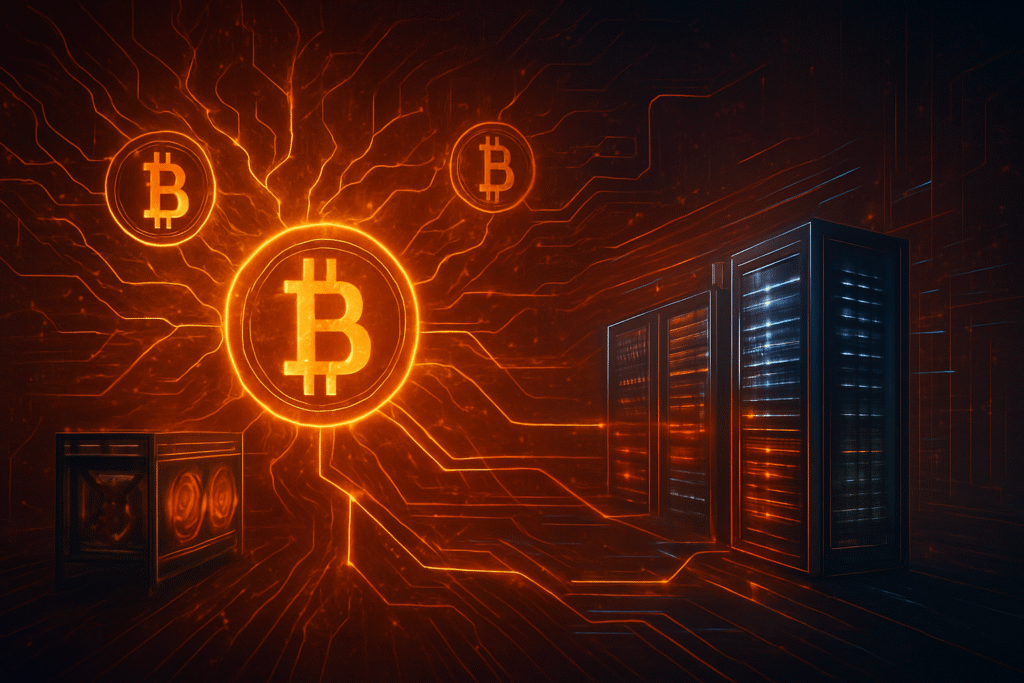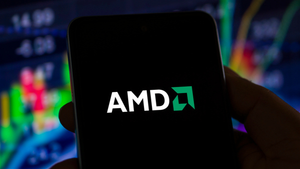
The landscape of Bitcoin mining is undergoing a seismic shift, as major players increasingly reallocate their formidable energy infrastructure and expertise towards the booming Artificial Intelligence (AI) data center market. This strategic pivot, driven by evolving economics in the cryptocurrency space and an insatiable demand for AI computational power, marks a significant transformation for an industry traditionally solely focused on digital asset extraction. Leading this charge is Bitfarms (NASDAQ: BITF), a prominent North American energy and digital infrastructure company, which has made several key announcements throughout 2025 signaling its firm commitment to AI.
The immediate market reaction to this strategic reorientation has been mixed. While early announcements of AI initiatives were met with investor enthusiasm, recent financial performance has introduced volatility. On October 10, 2025, Bitfarms' stock surged by over 12% following news of a substantial debt facility conversion aimed at accelerating AI development. However, today, November 13, 2025, the company's shares saw a sharp decline of 13-14% in pre-market and early trading, despite reaffirming its AI strategy, as it reported disappointing third-quarter 2025 results. This duality highlights the industry's ambitious long-term vision clashing with the immediate challenges of a complex transition. This pivot is critical for the crypto ecosystem, as it signifies a maturation and diversification of the underlying infrastructure that powers decentralized networks, potentially leading to more stable and diversified revenue streams for what has historically been a highly cyclical business.
Market Impact and Price Action
The strategic pivot towards AI data centers has created distinct market reactions for companies like Bitfarms. On October 10, 2025, the news that Bitfarms had converted a $300 million private debt facility from Macquarie Group into a project-specific financing vehicle for its Panther Creek, Pennsylvania data center campus, explicitly to accelerate HPC and AI development, sent its stock (NASDAQ: BITF) soaring. Shares climbed by 12.23% to $4.68, reaching a 52-week high and contributing to an impressive rally of over 440% in the preceding six months. This demonstrated strong investor confidence in the company's foresight and strategic realignment towards the high-growth AI infrastructure sector.
However, the enthusiasm was tempered today, November 13, 2025. Despite further solidifying its AI strategy with announcements like the conversion of its Washington State facility to HPC/AI workloads and plans to support next-generation Nvidia GPUs, Bitfarms' stock experienced a significant downturn. The company reported a larger-than-expected loss per share of -$0.08 (compared to an analyst consensus of -$0.02) and revenue of $69.3 million, falling short of the $84.7 million consensus for its third quarter of 2025. This immediate negative reaction underscores that while the long-term strategic direction is compelling, current financial performance and missed earnings targets can still trigger significant short-term volatility.
The broader Bitcoin (BTC) market, while not directly tied to Bitfarms' stock performance, is indirectly affected by these industry trends. The Bitcoin halving event in April 2024 significantly reduced mining rewards, leading to a substantial decrease in average hash prices by mid-2025. This declining profitability for traditional Bitcoin mining has been a primary catalyst for the industry's diversification into AI. While Bitcoin's price movements are influenced by a multitude of macroeconomic factors and market sentiment, the underlying health and strategic adaptability of its mining network contribute to overall ecosystem stability. The shift towards more diversified revenue streams for miners could, in the long run, reduce the sell-pressure often associated with miners needing to cover operational costs, potentially offering a more stable foundation for Bitcoin's market dynamics.
Community and Ecosystem Response
The crypto community and broader Web3 ecosystem have largely viewed the Bitcoin mining industry's pivot to AI with a mix of pragmatism and cautious optimism. Discussions across platforms like Crypto Twitter and Reddit reflect a general understanding of the economic pressures facing miners post-halving and the compelling financial incentives offered by AI. Influencers and thought leaders in the space have highlighted the strategic brilliance of leveraging existing energy infrastructure for a burgeoning market with significantly higher revenue potential per megawatt.
Many see this as a natural evolution for an industry that has always been at the forefront of energy-intensive computation. The ability of miners to repurpose their robust electrical grids, cooling systems, and data center expertise for AI and High-Performance Computing (HPC) is seen as a testament to their adaptability and innovation. While some purists might lament any perceived deviation from "pure" Bitcoin mining, the overwhelming sentiment leans towards recognizing this as a necessary and intelligent diversification strategy. It allows companies to create more resilient business models with predictable cash flows, reducing their sole reliance on the volatile price of Bitcoin. This shift is also viewed as beneficial for the broader tech ecosystem, as it brings significant computational resources online faster and more efficiently, supporting the rapid advancement of AI.
What's Next for Crypto
The strategic pivot of Bitcoin miners towards AI data centers has profound short-term and long-term implications for the crypto market. In the short term, investors will continue to scrutinize the financial performance of these transitioning companies, as evidenced by Bitfarms' recent stock volatility. The successful execution of these AI initiatives, including securing lucrative contracts with tech giants, will be crucial for validating their new business models. Potential catalysts include further announcements of AI partnerships, faster-than-expected deployment of AI-ready infrastructure, and clear revenue generation from these new ventures.
Long-term, this trend could fundamentally reshape the Bitcoin mining industry into a diversified digital infrastructure sector. Miners might evolve into hybrid entities, balancing Bitcoin mining with AI/HPC services, leading to more stable and predictable financial performance. This resilience could attract a broader range of institutional investors who seek less volatile opportunities. For projects and investors, strategic considerations now include evaluating miners not just on their hash rate and cost of production, but also on their AI strategy, infrastructure readiness, and ability to secure high-value AI contracts. The successful integration of AI data centers could lead to a new era of growth for these companies, potentially making them less susceptible to Bitcoin's price swings. We could see scenarios where these companies become critical suppliers in the global AI supply chain, thereby enhancing their overall market value and stability.
Bottom Line
The strategic shift of major Bitcoin miners like Bitfarms towards AI data centers represents a pivotal moment for the cryptocurrency industry. For crypto investors and enthusiasts, the key takeaway is the increasing sophistication and diversification within the sector. This isn't merely a trend; it's a fundamental re-evaluation of business models in response to post-halving profitability challenges and the explosive demand for AI computation. Miners are leveraging their unique assets – vast energy infrastructure and data center operational expertise – to tap into a significantly more lucrative market.
The long-term significance of this pivot cannot be overstated. It promises to create more robust and resilient companies within the digital asset space, capable of generating more stable and predictable cash flows. This stability could attract more traditional capital into the sector, furthering crypto adoption by demonstrating the tangible utility and adaptability of its underlying infrastructure. Important dates and metrics to monitor include the progress of Bitfarms' Panther Creek data center, projected to be energized by the end of 2026, and the conversion of its Washington site to HPC/AI workloads by December 2026. Furthermore, keep an eye on announcements regarding support for next-generation GPUs like Nvidia's Vera Rubin, expected in Q4 2026, which will indicate the cutting-edge nature of these new facilities. The success of these initiatives will be crucial indicators of the industry's ability to navigate this complex, yet promising, transition.
This article is for informational purposes only and does not constitute financial or investment advice. Cryptocurrency investments carry significant risk.





